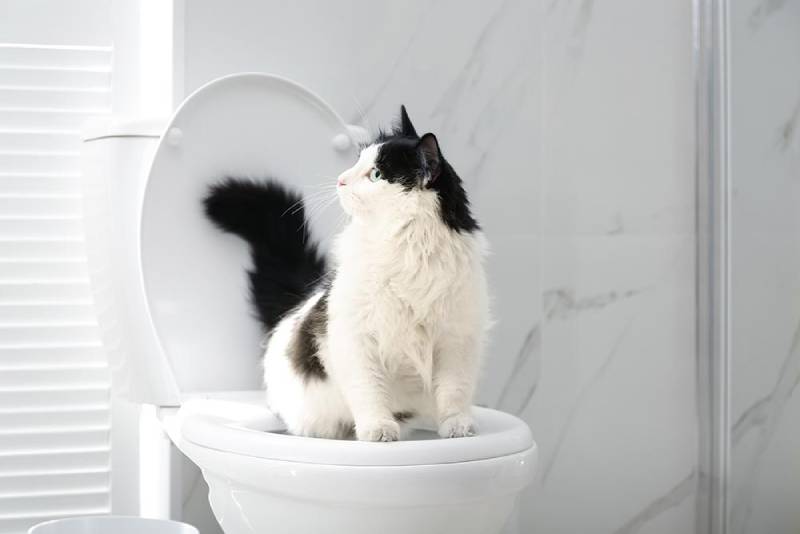Never Flush Cat Poop Down Your Toilet - Safeguard Your Plumbing System
Never Flush Cat Poop Down Your Toilet - Safeguard Your Plumbing System
Blog Article
This article in the next paragraphs involving How to Dispose of Cat Poop and Litter Without Plastic Bags is exceptionally remarkable. Read on and draw your own final thoughts.

Intro
As pet cat proprietors, it's essential to be mindful of just how we take care of our feline buddies' waste. While it may appear convenient to purge pet cat poop down the bathroom, this practice can have damaging effects for both the environment and human health.
Ecological Impact
Flushing cat poop presents hazardous pathogens and parasites into the supply of water, presenting a considerable risk to marine environments. These contaminants can negatively influence marine life and compromise water quality.
Health Risks
Along with environmental issues, purging cat waste can additionally present health risks to human beings. Cat feces might include Toxoplasma gondii, a bloodsucker that can cause toxoplasmosis-- a potentially severe health problem, specifically for pregnant ladies and people with weakened immune systems.
Alternatives to Flushing
The good news is, there are safer and much more accountable methods to take care of pet cat poop. Take into consideration the following alternatives:
1. Scoop and Dispose in Trash
The most typical method of disposing of feline poop is to scoop it into a naturally degradable bag and toss it in the garbage. Make sure to use a specialized litter scoop and get rid of the waste promptly.
2. Use Biodegradable Litter
Opt for eco-friendly pet cat trash made from materials such as corn or wheat. These clutters are environmentally friendly and can be safely dealt with in the garbage.
3. Bury in the Yard
If you have a lawn, consider burying feline waste in an assigned location away from veggie gardens and water resources. Make sure to dig deep enough to prevent contamination of groundwater.
4. Mount a Pet Waste Disposal System
Invest in a pet dog garbage disposal system particularly designed for cat waste. These systems use enzymes to break down the waste, decreasing smell and ecological effect.
Conclusion
Liable family pet ownership prolongs beyond giving food and sanctuary-- it additionally entails appropriate waste management. By avoiding flushing feline poop down the commode and choosing different disposal techniques, we can decrease our ecological impact and safeguard human health.
Why You Should Never Flush Cat Poop Down the Toilet
A rose by any other name might smell as sweet, but not all poop is created equal. Toilets, and our sewage systems, are designed for human excrement, not animal waste. It might seem like it couldn’t hurt to toss cat feces into the loo, but it’s not a good idea to flush cat poop in the toilet.
First and foremost, assuming your cat uses a litter box, any waste is going to have litter on it. And even the smallest amount of litter can wreak havoc on plumbing.
Over time, small amounts build up, filling up your septic system. Most litter sold today is clumping; it is made from a type of clay that hardens when it gets wet. Ever tried to scrape old clumps from the bottom of a litter box? You know just how cement-hard it can get!
Now imagine just a small clump of that stuck in your pipes. A simple de-clogger like Drano isn’t going to cut it. And that means it’s going to cost you big time to fix it.
Parasitic Contamination
Believe it or not, your healthy kitty may be harboring a nasty parasite. Only cats excrete Toxoplasma in their feces. Yet it rarely causes serious health issues in the cats that are infected. Most people will be fine too if infected. Only pregnant women and people with compromised immune systems are at risk. (If you’ve ever heard how women who are expecting are excused from litter cleaning duty, Toxoplasma is why.)
But other animals may have a problem if infected with the parasite. And human water treatment systems aren’t designed to handle it. As a result, the systems don’t remove the parasite before discharging wastewater into local waterways. Fish, shellfish, and other marine life — otters in particular — are susceptible to toxoplasma. If exposed, most will end up with brain damage and many will die.
Depending on the species of fish, they may end up on someone’s fish hook and, ultimately on someone’s dinner plate. If that someone has a chronic illness, they’re at risk.
Skip the Toilet Training
We know there are folks out there who like to toilet train their cats. And we give them props, it takes a lot of work. But thanks to the toxoplasma, it’s not a good idea.

As an enthusiastic person who reads about How to Dispose of Cat Poop and Litter Without Plastic Bags, I think sharing that post was really helpful. Do you know about anybody else who is occupied with Don’t flush cat feces down the toilet? Take a moment to share it. We enjoy reading our article about Don’t flush cat feces down the toilet.
Free Estimate Report this page